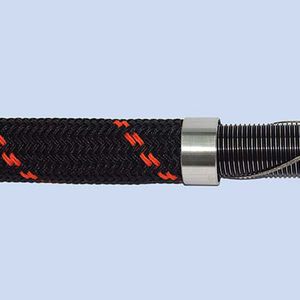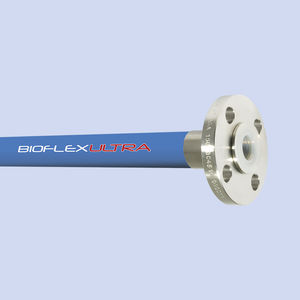
- Products
- Catalogs
- News & Trends
- Exhibitions
Protective coating Bioflex Ultra ASPTFEfor hosesfor hygienic applications

Add to favorites
Compare this product
Characteristics
- Function
- protective
- Material
- PTFE
- Applications
- for hoses
- Domain
- for hygienic applications
- Other characteristics
- anti-static
Description
Bioflex Ultra AS is an essential requirement in applications where there is the risk of an electrostatic charge build-up on the inside surface of the PTFE tube which may then discharge through the tube wall. Media passing through which create such a risk are fluids which have a Conductance of less than 10-8 S/m (Siemens per Metre), or 104 pS/m such as fuels, solvents, freons, some WFI (ultra-pure “Water for Injection”) and non-polar organics which are being transferred at a medium to high flow velocity.
All twin or multi phase media, and any non-mixing media, such as powder in air, or water droplets in steam, in gases or in oil, also colloidal fluids constitute a particular hazard for static charge generation, and always require grade AS.
If in doubt, either order AS grade, or consult Aflex Hose.
Design & Approvals
Bioflex Ultra AS is an anti-static PTFE liner manufactured from FDA 21 CFR 177.1550 approved PTFE, mixed with less than 2.5% of ‘high purity’ Carbon Black material to FDA requirement 21 CFR 178.3297. Bioflex Ultra AS grade also meets the requirements of EC Directive 2007/19/EC. The carbon is encapsulated by the PTFE, and in normal, non-abrasive applications will not come loose to contaminate any fluid passing through.
Bioflex Ultra AS also conforms to USP Class VI, at 37˚C (99˚F), 70˚C (158˚F) and at 121˚C (250˚F) - see Quality Assurance & Certification.
Catalogs
Exhibitions
Meet this supplier at the following exhibition(s):

*Prices are pre-tax. They exclude delivery charges and customs duties and do not include additional charges for installation or activation options. Prices are indicative only and may vary by country, with changes to the cost of raw materials and exchange rates.












